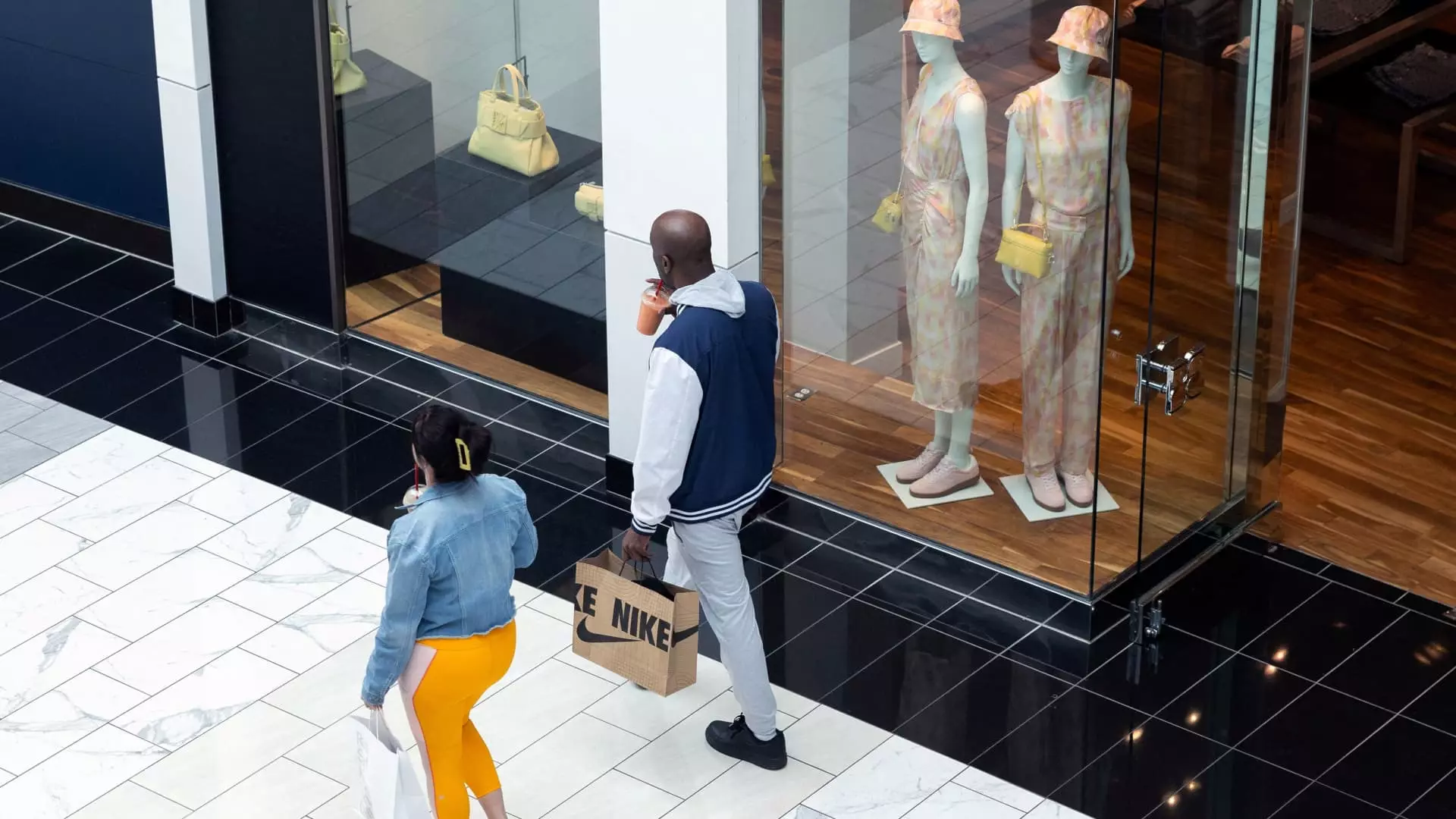In a nation where economic anxieties loom large over the horizon, it is nothing short of perplexing that consumer spending remains robust. Recent statistics reveal that a staggering 73% of Americans report feeling “financially stressed,” yet their wallets continue to open in defiance of looming economic threats. This dichotomy raises a critical question: why are consumers exhibiting seemingly contradictory behavior? The answer may lie in a blend of panic buying driven by fears of impending tariffs and a psychological inertia that prevents consumers from scaling back their spending habits.
While many Americans understand on a conceptual level that economic downturns may be imminent—largely fueled by tariff wars that have heightened prices on everyday goods—their spending habits tell a different story. The paradox is evident: despite overwhelming sentiments of financial strain, many continue to engage in purchasing behaviors that provide a momentary sense of security or normalcy. Behavioral economists, like Sasha Indarte from the Wharton School, emphasize that even amid anxiety, people cling to the familiar routines of spending. This result suggests a behavioral quagmire, where stress and purchasing seem to coexist almost in a state of reckless abandon.
The Federal Reserve’s Concerns
Federal Reserve Chair Jerome Powell has voiced his apprehensions regarding the precarious state of the economy. According to Powell, consumer spending is the main pillar supporting economic growth, and this foundation is beginning to show signs of cracking. He cautions that President Trump’s tariff policies threaten to stir inflation while simultaneously stunting growth—an ominous combination that often heralds economic decline. Interestingly, while the Consumer Spending index has ticked up in recent months, the underlying sentiment captured by various economic indicators tells a different story—one of impending recession.
For instance, the Conference Board’s expectations index has fallen to its lowest point in over a decade, signaling a heightened risk of recession that aligns strikingly with popular sentiment. As consumers grapple with fears of inflation and rising prices due to tariffs, they inadvertently develop an outlook that is more pessimistic than optimistic. This negative sentiment casts a shadow over future spending, creating a potential catalyst for a self-fulfilling prophesy: as apprehensions about the economy grow, consumer behavior reflects that growing pessimism, potentially leading to a downturn.
Panic Buying Fuelled by Fear
Interestingly, this consumer spending phenomenon has frequently been fueled by panic buying, a behavioral response triggered by uncertainty surrounding tariffs. The fear of higher prices prompts many shoppers to purchase goods that they may typically forgo. This urge to stockpile in times of uncertainty seems to defy conventional financial prudence. When consumers feel they must act “now or never,” the economic implications of such behavior can often reverberate throughout various sectors.
The irony, however, is that this behavior may be unsustainable in the long term. The Urban-Brookings Tax Policy Center warns that if the current lower tariff rates become permanent, American households could face real income reductions exceeding $3,000 annually come 2026. Therefore, what might feel like an immediate remedy for consumer apprehension could ultimately prove detrimental. As stated by Greg McBride from Bankrate, inflation remains a persistent threat, putting immense pressure on household budgets. This pressure is bound to eventually alter consumer spending habits—when consumers can no longer afford to spend freely, the essential economic lifeblood could stagnate.
Behavioral Economics: The Crux of the Crisis
The crux of the issue goes beyond simple economic principles. It delves into the realm of behavioral economics, where ingrained tendencies and biases play a significant role in financial decision-making. Indarte posits that even amidst flags signaling the need for a spending cut, many consumers do not immediately act on these concerns—often due to a preference for their familiar habits. This inclination toward the status quo gnaws away at their ability to adapt to new economic realities.
This could very well lead to a tipping point. As households reach their financial breaking points due to augmented economic pressures, consumers may be forced to dramatically rein in their spending. This shift could catalyze broader economic repercussions, rippling through businesses that rely on consumer spending for their very survival. “One person’s spending becomes another person’s income,” as Indarte aptly puts it, hinting at a cascading effect that could precipitate a significantly larger economic downturn.
As such, the current environment poses a complex challenge for both consumers and policymakers. Understanding the intricate web of psychological and economic factors at play is crucial if we are to navigate this precarious landscape effectively. We are left wondering how long this precarious dance of financial stress and consumer confidence can continue before it inevitably crumbles under its own weight.

